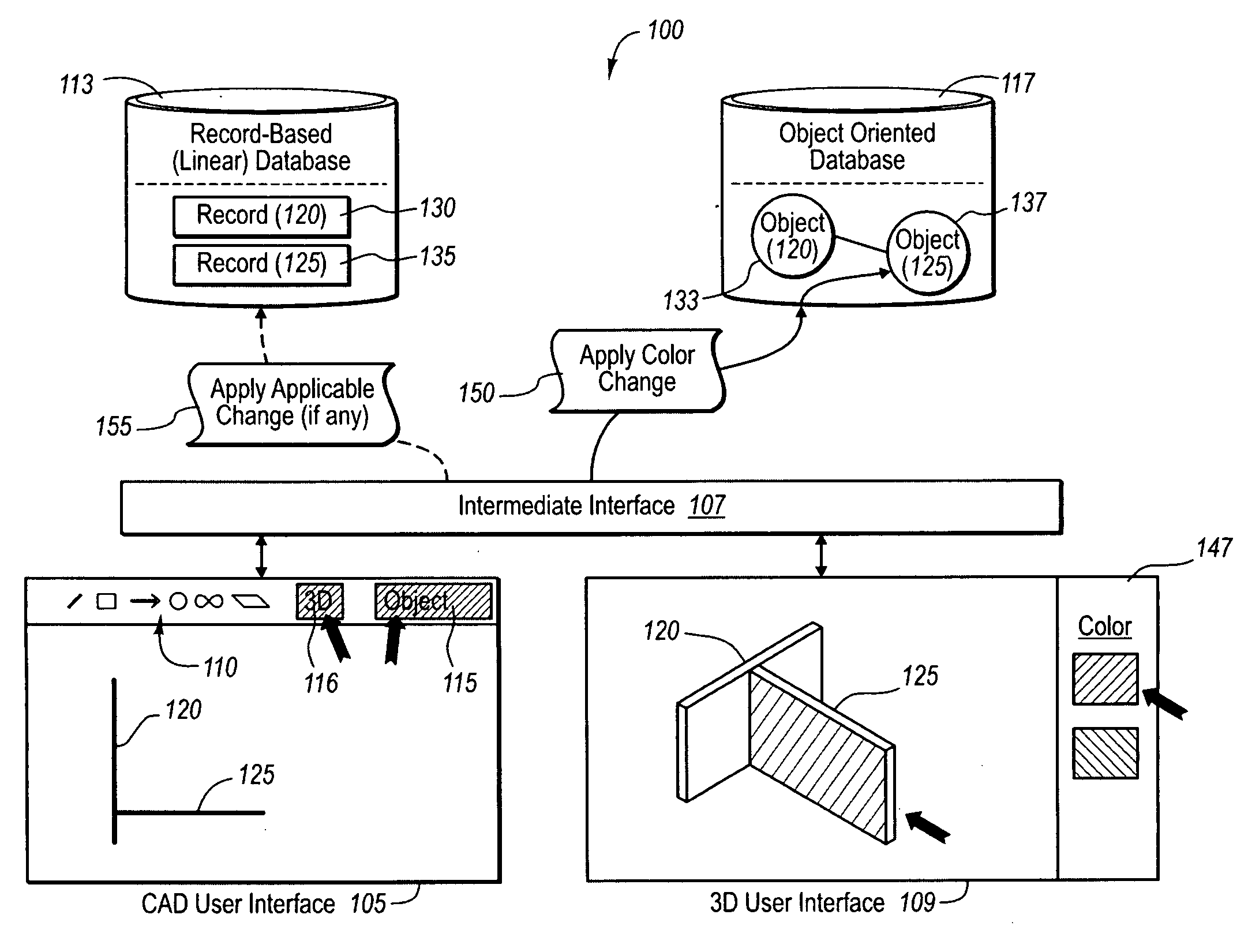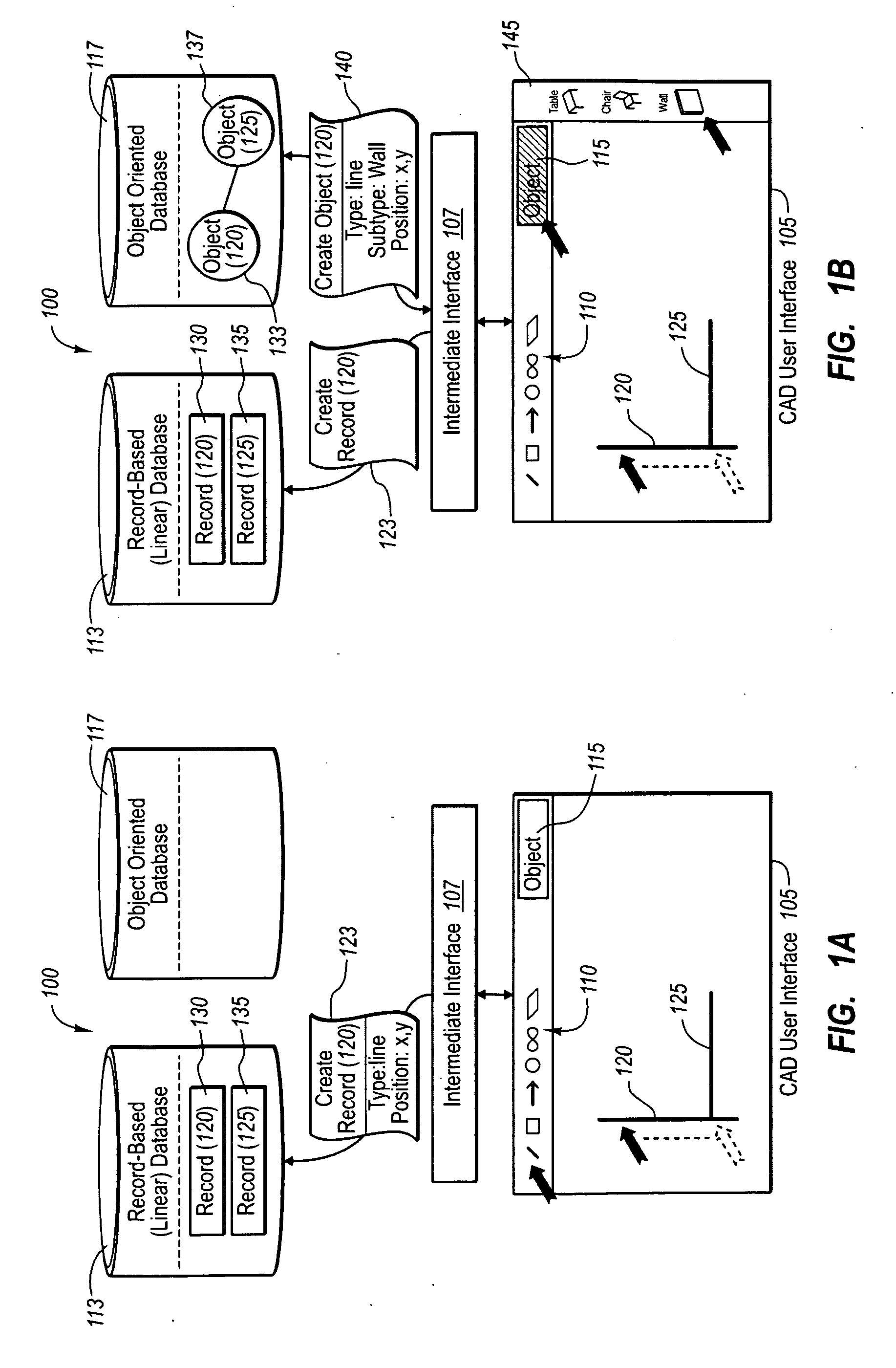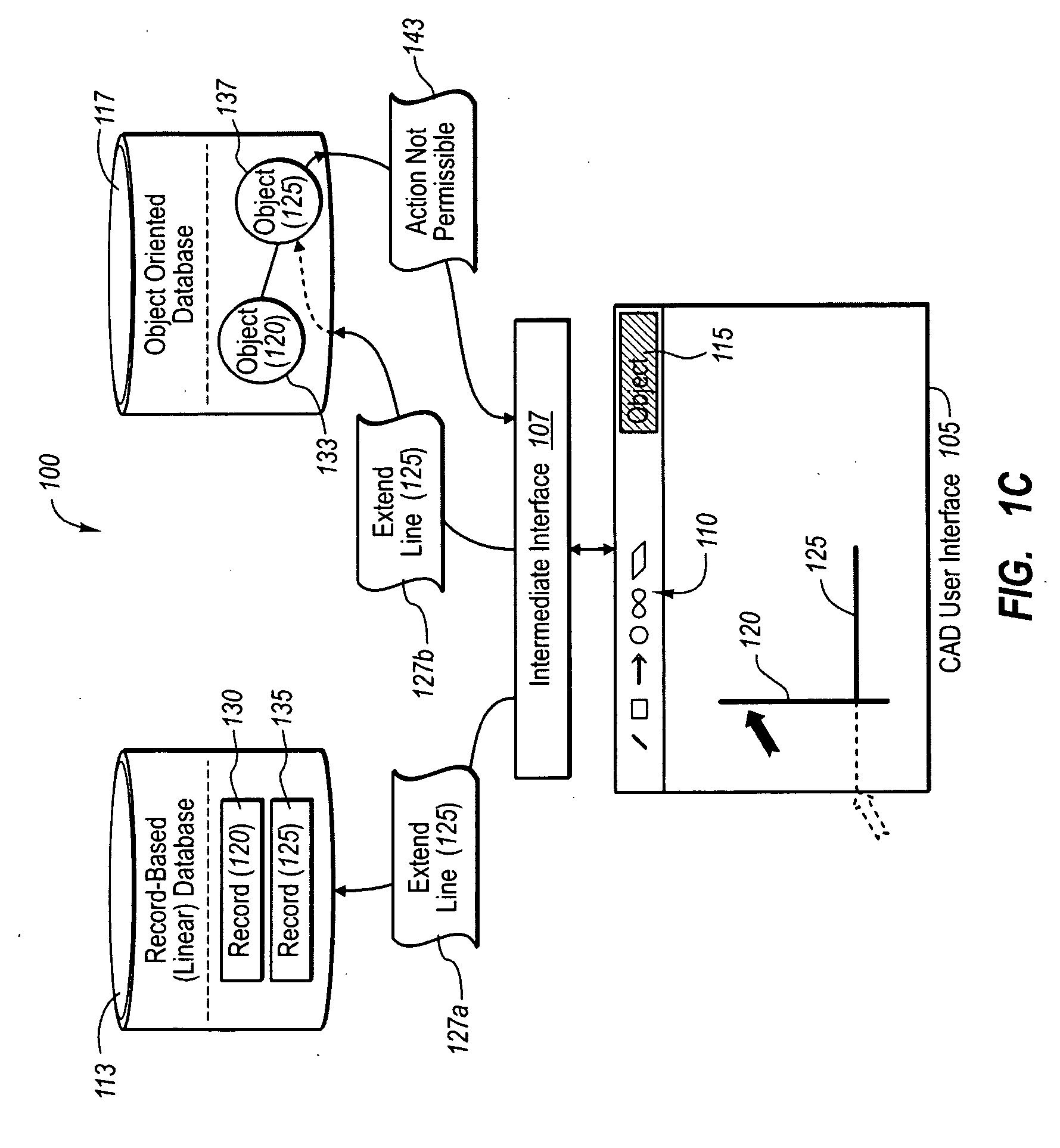Rendering and modifying cad design entities in object-oriented applications
a design entity and object-oriented technology, applied in special data processing applications, instruments, electric digital data processing, etc., can solve the problems of limiting the user's ability to layout or specify furniture, affecting the effect of design, and requiring laborious changes, so as to achieve the effect of viewing a cad-based design
- Summary
- Abstract
- Description
- Claims
- Application Information
AI Technical Summary
Benefits of technology
Problems solved by technology
Method used
Image
Examples
Embodiment Construction
[0032]The present invention extends to systems, methods, and computer program products configured to instantly render user-drawn CAD design elements such as blocks and / or lines (in a CAD application program) as one or more design elements in a separate, three-dimensional interface. This rendering is a three dimensional rendering, enabling the user to move, rotate, “fly-through” or edit the one or more design elements in the three-dimensional interface. This can allow the user to effectively view a CAD-based design in full context, even if there may be certain errors or inconsistencies in the design. In addition, in at least one implementation, the user can also convert the design elements to intelligent objects, and allow the system to warn or automatically correct for any errors or deficiencies in the design. This can allow the user to correlate the user's design changes in the CAD interface with real-world considerations, ensuring accuracy of the user's viewing experience, as well...
PUM
 Login to View More
Login to View More Abstract
Description
Claims
Application Information
 Login to View More
Login to View More - R&D
- Intellectual Property
- Life Sciences
- Materials
- Tech Scout
- Unparalleled Data Quality
- Higher Quality Content
- 60% Fewer Hallucinations
Browse by: Latest US Patents, China's latest patents, Technical Efficacy Thesaurus, Application Domain, Technology Topic, Popular Technical Reports.
© 2025 PatSnap. All rights reserved.Legal|Privacy policy|Modern Slavery Act Transparency Statement|Sitemap|About US| Contact US: help@patsnap.com



